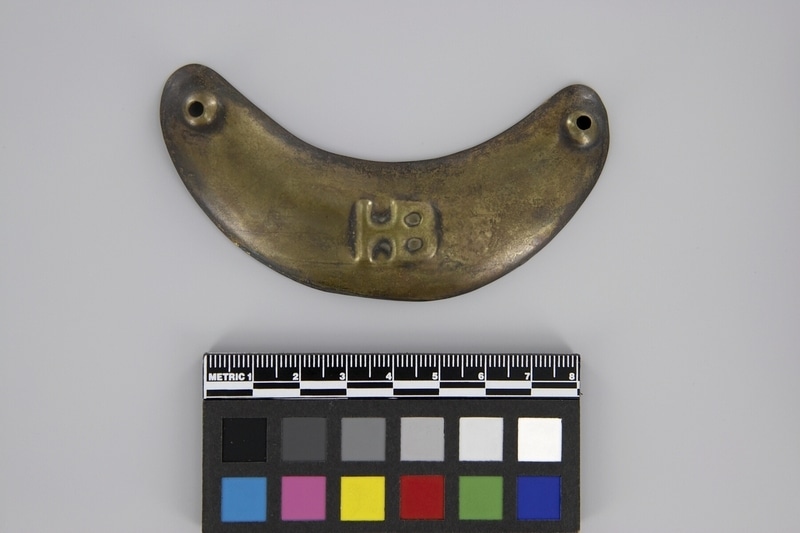Gorget Item Number: 1590/253 from the MOA: University of British Columbia

Description
Crescent-shaped convex gorget with holes at each end. Raised initials in centre.
History Of Use
In Europe during the Renaissance period the helmets of warriors were fitted with a crescent-shaped plate called a gorget, which extended downward to protect the throat. Gradually, this armour became obsolete due to the use of firearms, but some breastplates, helmets and gorgets were brought to North America for protection against native arrows. The use of this armour declined here too, in favour of increased mobility, but the crescent-shaped gorgets continued to be worn separately by officers as a badge of military rank and authority, and consequently had appeal as trade items denoting strength and power. Reference Hamilton, pages 69-71.
In 1670 King Charles II of England granted an exclusive fur trading charter to the Hudson’s Bay Company in what was later to become Canada. The company’s mandate was to protect the Crown’s interests and undertake exploration and territorial expansion. Competition for furs was intense, and in 1784 the North West Company was formed by a number of independent trading groups. By 1821 this Company faced bankruptcy and merged with the Hudson’s Bay Company. This latter company still exists today, operating a number of retail stores across Canada, and is known simply as The Bay. Difficulties have arisen regarding verification of the authenticity of this type of object. Further research is indicated.
Cultural Context
trade; personal decoration; status
Item History
- Made in Montreal, Quebec, Canada between 1760 and 1821
- Owned by Kathleen E. Reif before September 9, 1993
- Received from Kathleen E. Reif (Donor) on September 9, 1993
What
Who
- Culture
- Eastern Woodlands
- Previous Owner
- Kathleen E. Reif
- Received from
- Kathleen E. Reif (Donor)
Where
- Holding Institution
- MOA: University of British Columbia
- Made in
- Montreal, Quebec, Canada
When
- Creation Date
- between 1760 and 1821
- Ownership Date
- before September 9, 1993
- Acquisition Date
- on September 9, 1993
Other
- Item Classes
- metalwork
- Condition
- good
- Accession Number
- 1590/0253